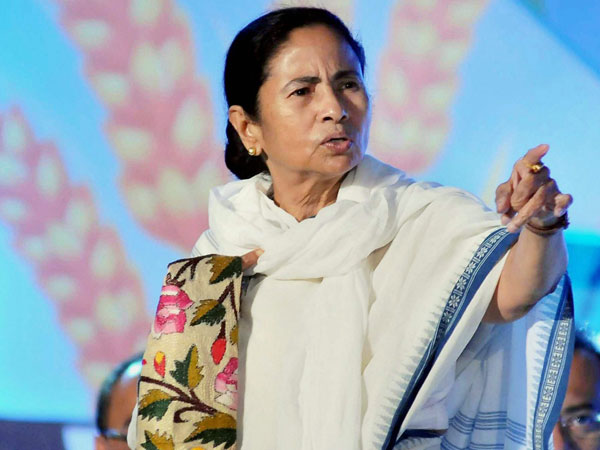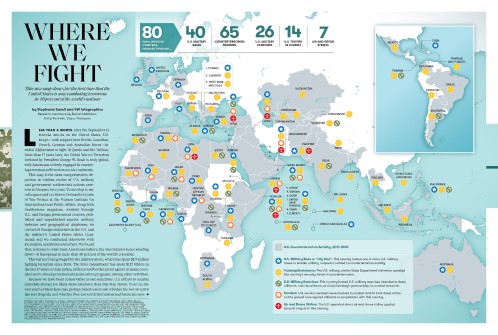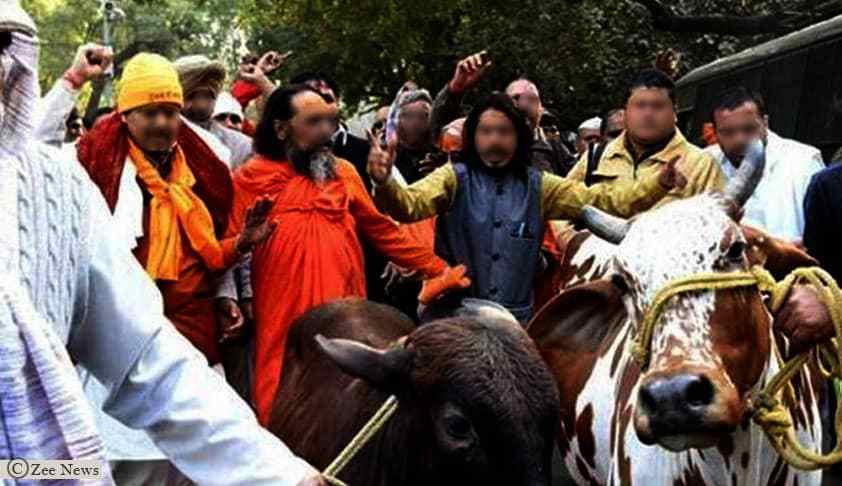Civil rights organizations Community Forest Rights-Learning and Advocacy process (CFR-LA) All India Forum for Forest Movements (AIFFM) and Mahila Kisan Adhikar Manch (MAKAAM) have worked out a Citizens’ Charter on forest rights vision and promise of FRA. Its demands are proposed to be placed before the political parties for the upcoming elections. Seeking broader consensus, following is the text of the charter

The Forest Rights Act (FRA) was enacted in 2006 to undo the historical injustice against Adivasis and other traditional forest-dwelling (OTFD) communities by recognizing their pre-existing rights over forest land and community forest resources. The FRA provides for democratic governance of forests by vesting the rights and authority to manage and conserve forests in the Gram Sabha and forest dwellers. The law also recognizes and vests rights over community forest resources (CFR), individual/common rights over forests for cultivation and habitation, ownership and control over minor forest produce (MFP).
FRA expressly recognizes women as equal participants in decision-making in the Gram Sabha, and their equal ownership in individual and community forest resources. For pastoral and nomadic communities, particularly vulnerable tribal groups (PVTGs), and displaced communities, the FRA recognizes rights over seasonal use, habitats and in-situ rehabilitation respectively.
DEVELOPMENT POTENTIAL OF FRA
At the minimum, FRA has the potential to secure rights and livelihoods of at least 20 crore STs and OTFDs over 40 million ha (50% of India’s forest land) covering 177,000 villages. The majority of districts with a high number of villages eligible to claim CFR are located in tribal majority and poverty stricken regions, and face conflicts over land and resources. Evidence from the ground shows that rights holders have used FRA effectively for:
- Transforming forest management to meet local livelihood and cultural needs;
- Democratizing environmental protection by relying on traditional knowledge and customary conservation practices;
- Securing gender justice and rights of women over land and forest;
- Ensuring food security and poverty alleviation;
- Addressing land and resource conflicts; • Moving towards meeting India’s international commitments for climate change mitigation, eg AICHI targets under the Convention on Biological Diversity.
CURRENT STATUS OF IMPLEMENTATION
As per MoTA, individual and community rights have been formally recognized over 10- 13% of minimum potential area up to 2018, although this data has many discrepancies. An earlier assessment by CFR-LA in 2016 showed that the extent of recognition of CFR rights is over a mere 3% of the potential area.
ISSUES AND CHALLENGES IN THE IMPLEMENTATION OF FRA
Institutional challenges
- Obstacles by forest bureaucracy and lack of political will: There are numerous reported instances of the forest department raising illegal objections to claims, not cooperating with Gram Sabhas in verification proceedings, imposing joint forest management (JFM) scheme on areas claimed under FRA, refusing to sign titles approved by District Level Committees (DLCs) and carrying out evictions where claims have been filed but not yet processed. Further, despite being the nodal ministry for FRA, MoTA has been marginalized by the MoEFCC in the formulation and implementation of policies relating to forests and forest rights. The absence of political will at the centre and state levels also ensures that the circulars and guidelines issued by MoTA on FRA are scarcely implemented. Nodal agencies at the state level continue to lack basic institutional support, capacity and human resources for the discharge of their functions. There are only minor investments into building capacities and efficiency of nodal agencies.
- Non-recognition of authority of Gram Sabhas and rights of women, OTFDs, PVTGs and other vulnerable groups: About 50-60% IFR claims have been arbitrarily and illegally rejected in different states. Lands used for activities ancilliary to agriculture have not been recognized. Numerous titles impose illegal conditions on the exercise of rights by Gram Sabhas, or are issued over a smaller area than is claimed, or do not clearly demarcate the land leading to conflict. Women continue to be marginalized from decision-making in Gram Sabhas and FRCs, despite their right to full and effective participation in these bodies, and their traditional leadership in conservation. Many titles have not been issued jointly in the names of both spouses or single women in female-headed households. Instead, women remain most vulnerable to harassment on account of false cases of forest offences for collection of MFP, and to sexual violence and atrocities in the exercise of their rights. OTFDs have been mostly excluded due to misinterpretation of the provision relating to their eligbiity and the onerous evidentiary conditions imposed for establishing habitation and dependence of OTFDs on forests for three generations. At the same time, PVTGs, pastoral and nomadic groups face serious danger of loss of life, culture and livelihoods without secure rights and titles over their habitats and seasonal land use.
Conflicting laws and policies
- Large-scale forestland diversion and illegal exemptions in clearance processes: Between June 2014- May 2018, MoEFCC has issued Stage-I and StageII clearance for more than 6,000 new projects over 124,788 hectares, out of which mining and linear projects constitute 25% each (CSE 2018). The MoEFCC has issued a number of Guidelines and Circulars exempting compliance with FRA and free, prior, informed consent of Gram Sabhas in clearance for linear projects and prospecting of minerals. Further, there is routine lack of compliance with statutory processes under the Forest Conservation Act, LARR, Coal Bearing Areas Act etc. in granting approvals for new projects or regularizing old ones. These bypass necessary safeguards for environmental protection, as well as rights, livelihood and consent of affected peoples, leading to human rights violations and impoverishment.
- Evictions from Protected Areas and mass atrocities: Efforts to coercively evict forest-dwellers have escalated in recent years, through the illegal declaration/ extension of protected areas (wildlife corridors, tiger reserves etc.). Statutory processes under the FRA and Wildlife Protection Act (WLPA) requiring exploration of strategies for co-existence and community conservation, recognition of rights, consent of Gram Sabha to relocation and rehabilitation packages, among others, are rarely complied with. There are reported instances where Gram Sabha consent has been forged, and the forest department has imposed unreasonable and illegal restrictions on exercise of rights, including collection of MFP, cultivation and free movement of rights holders, especially OTFDs and PVTGs. These are accompanied by routine atrocities and violence, as women face physical, verbal and sexual harassment from the forest department in their exercise of rights, and dispossession through fencing and destruction of common lands.
- Compensatory Afforestation Fund Act, 2016 and Rules, 2018: The CAF Act and Rules operate on the flawed assumption that forests destroyed for non-forest purposes can be replaced through plantations in others areas. CAF leads to largescale land and forest rights violations, atrocities upon adivasis and forest-dwelling communities as plantations are routinely set up on forest and common lands. It also causes environmental destruction (70% of CA is of commercial monoculture plantations) while failing to control the accelerated rate of forest diversion, and harms local livelihoods with disproportionate hardship on women. CAF violates the FRA, PESA and Fifth Schedule by failing to provide for the free, prior and informed consent of gram Sabhas despite major objections by forest rights groups.
- Creation of Land Banks: Land banks, proposed both for industrial and CA purposes, illegally usurp common lands, revenue forests and degraded forests over which forest-dwellers have legal rights. On 8 November 2017, MoEFCC issued Guidelines for the creation of land banks for compensatory afforestation for easier and speedier forest clearances, while violating FRA, PESA and Fifth Schedule.
- Draft National Forest Policy 2018: The draft NFP 2018 reverses decades of significant gains in democratizing forest governance under the existing NFP 1988, FRA and PESA. The 2018 draft regresses to colonial-era forest management by reintroducing a focus on increased privatization, industrialization and diversion of forest resources, and encouragement to monoculture plantations. Further, the draft proposes to subsume the statutory authority of gram Sabhas to manage and govern forests under the FRA by creating a parallel ‘Community Forest Management’ Mission within the failed framework of Joint Forest Management (JFM).
- Non-implementation of minimum support price for MFP: Although Central government has professed support to guarantee MSP for MFP owned and collected by forest-dwelling communities, significantly low volume of funds have been released, and no action barring a few notifications has been taken.
- National REDD+ strategies: The national REDD+ strategies promote massive monocultural plantations through the forest department and private sector involvement, expansion of protected areas, and inclusion of new areas for carbon sequestration such as grasslands, mangroves, coastal sea grasslands etc., with only vague references to safeguard mechanisms for ensuring protection of rights of local communities. They also promote JFM as the preferred institutional mechanism, raising concerns over the impact on communities dependent on them, and with the authority to manage these resources, such as pastoral communities.
DEMANDS
- Ensure recognition of all community and individual forest rights of STs and OTFDs, including the rights of single and married women, PVTGs, nomadic and pastoralist tribes, displaced communities.
- MoTA to launch national Mission for FRA implementation (Van Adhikar Abhiyan)
- Review functioning of institutional mechanisms under FRA to ensure they are properly constituted, have adequate representation of women, and are effective
- Review all rejected and pending claims, and those approved conditionally or over smaller area than is claimed
- Make available gender-disaggregated data on the status of claims, titles and composition of authorities Recognize and protect authority of Gram Sabhas to govern forests, with the full and unrestricted participation of women
- Ensure compliance of all Forest Department Working Plans with the CFR Management Plans of Gram Sabhas, and scrap JFM Committees/Van Suraksha Samitis undermining the authority of Gram Sabhas
- Ensure free, prior and informed consent of Gram Sabhas on all matters relating to the management, protection and conservation of community forests
- Direct state governments to withdraw all forest offence cases and other retributive measures criminalizing exercise of rights by STs and OTFDs
- Allocate all funds for forest development and management to Gram Sabhas, and ensure convergence of all relevant government schemes (MGNREGA, PDS etc.) with FRA
- Cancel leases on forestlands granted to Forest Development Corporations and implement MSP for MFP owned and controlled by Gram Sabhas Repeal all laws and policies conflicting with FRA and undermining the authority of Gram Sabhas.
- Constitute a High Level Empowered Committee headed by MoTA, with members from MoEFCC, MoRD, MoPR, NCST, NHRC and non-official members, to review all conflicting enactments, policies and guidelines issued by MoEF, MoRD and other ministries to ensure compliance with FRA. Repeal CAF Act, withdraw MoEFCC guideline for creation of land banks, draft NFP 2018 and National REDD+ strategies.
- Ensure notification of all tiger reserves, tiger corridors, wildlife sanctuaries and Ecologically Sensitive Zones comply with FRA and WLPA 2006
- Suspend all relocations and evictions until forest rights are properly and lawfully recognized; free, prior, informed consent of Gram Sabhas obtained; and past and ongoing relocation processes reviewed for FRA compliance. Ensure proper compensation for recognized forest rights and existing assets under LARR whenever relocation from PAs does take place
- Integrate FRA in all targets and commitments for achieving international conservation and climate change mitigation goals, including those under the AICHI targets and Other Effective Area Based Conservation Measures (OECMs) under the Convention on Biological Diversity Ensure compliance of forest land diversion processes under all enactments with FRA and the statutory authority of Gram Sabhas by obtaining their free, prior and informed consent
- MoTA should actively engage with MoEFCC, Forest Advisory Committee (FAC) in all present and future forest clearance processes to ensure compliance with FRA and Forest Conservation (Amendment) Rules, 2016
- Review all forest diversion since 2006 for compliance with FRA and Rule 2 (b) of Forest Conservation (Amendment) Rules, 2016; identify violations and recommend action, including withdrawal of clearance where diversion has been recommended without free, prior and informed consent of Gram Sabhas
- Authorize the FAC to directly receive consent/ non-consent from Gram Sabhas Reform the forest bureaucracy to serve the rights of forest-dwelling communities by respecting MoTA’s mandate related to forest rights
- Direct forest bureaucracy to provide proactive support for rights recognition and FRA implementation in co-ordination with MoTA and state nodal agencies
- Build capacities of forest department to respect and incorporate rights of use, management and conservation of STs and OTFDs over forests
- Direct state governments to ensure accountability of forest department for FRA and human rights violations, atrocities and violence against women, STs and OTFDs in the exercise of their rights
Courtesy: Counterview.org



















